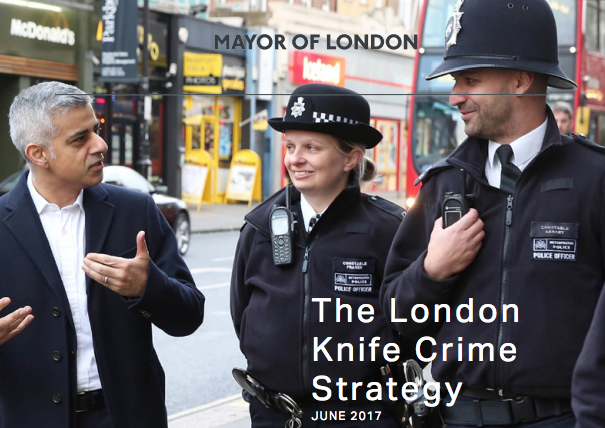As knife crime fatalities in London have increased, the issue has moved up media and political agendas to the point where it is being termed an “epidemic” and Sadiq Khan is under continuous pressure to respond. He published a London Knife Crime Strategy in the summer, a publicity campaign in November and pledged extra money last week. He’s announced an increase in “intelligence-led” stop-and-search. Even so, the issue topped the bill at Mayor’s Question Time last week, with Conservative AM Shaun Bailey wrangling with the Mayor over what more could and should be done.
In one sense, the activity and argument is welcome. Indifference would be indefensible. But the MQT exchanges did not impress. MayorWatch’s Martin Hoscik rightly observed that the “heated exchanges shed no light on how the Met will tackle the issue”. Funding matters and so do police tactics, but the things Londoners most need to know are in danger of becoming the first casualties of blame wars which, especially when the subject at hand is so disturbing, all public protagonists with voters to please and press coverage to manage are extremely anxious not to lose.
How do we who live safely outside our city’s most bleak and brutal sub cultures decide what to believe about what is really happening and how it can be addressed? No one doubts that the number of deaths by stabbing has been rising in the capital, but does that necessarily mean that more people are being wounded or threatened with knives than before? Has London really become more dangerous for those at risk and is it a long term trend?
The rising death toll is now approaching what it was the last time anxiety about it became big London news, in 2008 when it was a major factor in the mayoral election of that year. Why did it fall in the meantime? To what extent did police or mayoral policy really make a difference? What exactly can the current Mayor, the Met or anyone else do to make it fall again? If knife crime as a whole really has become an “epidemic”, could it be bigger and more serious one than is realised by all but the most pessimistic of us who are rarely, if ever, actually menaced by it?
The clip below is from an edition of Newsnight broadcast in May. Criminologist Professor Marian Fitzgerald explains how the recording and categorising of knife crime by police officers can be influenced by pressures from above. Sheldon Thomas of Gangsline describes how terrifying life can be for young people in danger of being hurt by or pulled into the “parallel world” of intimidation and violence he describes. Neither minimises the problem. Both urge us to face it clearly.
That six minute discussion brought more focus and insight to the question of youth violence and gang culture than any number of set-piece party political set-tos, which we look likely to endure plenty more of as the borough elections near.
What can the Mayor, the Met and others most usefully do? Less point-scoring would be helpful. So would some shared recognition that messages designed to reassure the safe and secure majority are unlikely to be received by, let alone influence, those who perpetrate terrible violence and, most importantly, those young people in our city who live in daily fear of it. Perhaps some first principles need underlining. The job of the Met is to protect Londoners against crime and to restrain and detain those who commit it. The job the Mayor was elected to do includes making sure the Met does those things well. And it needs to be done best of all for those whose need for it is greatest.

